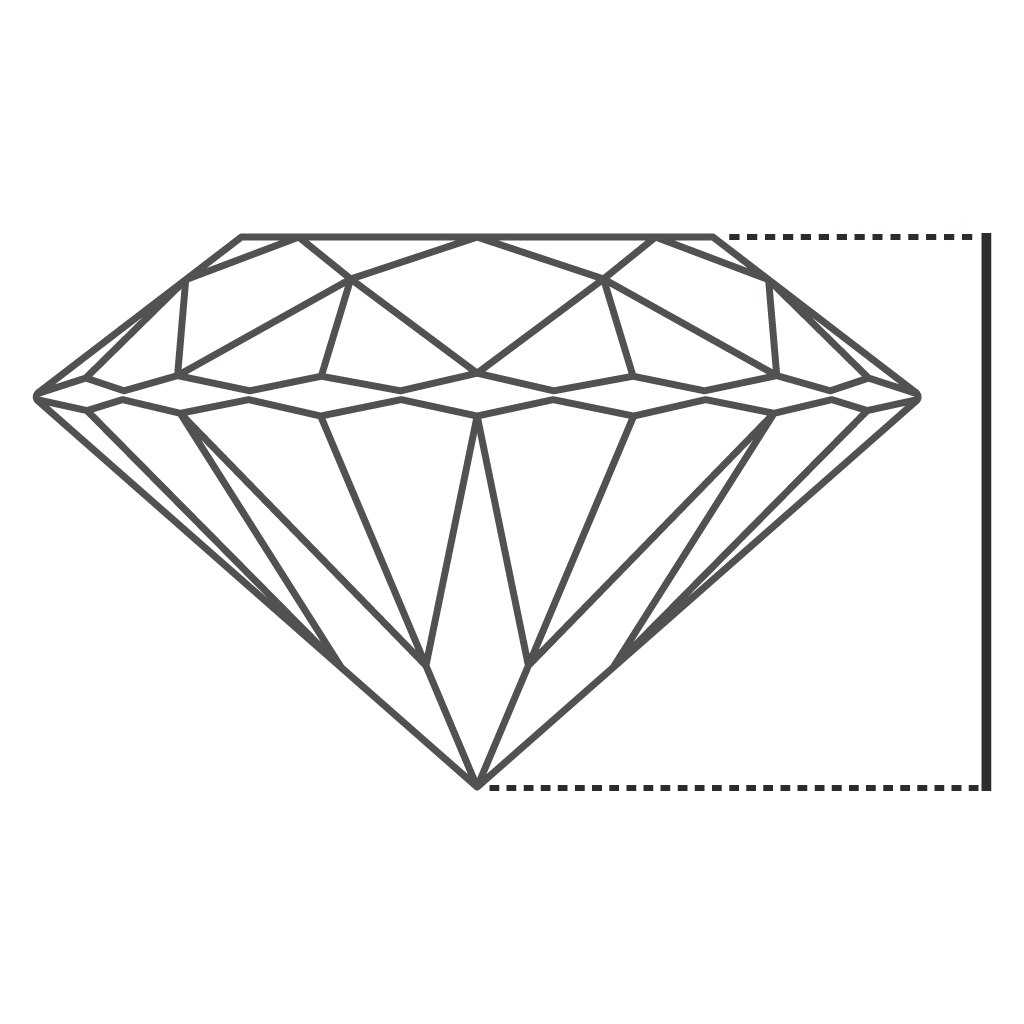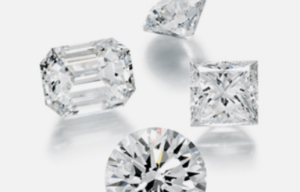Anatomy
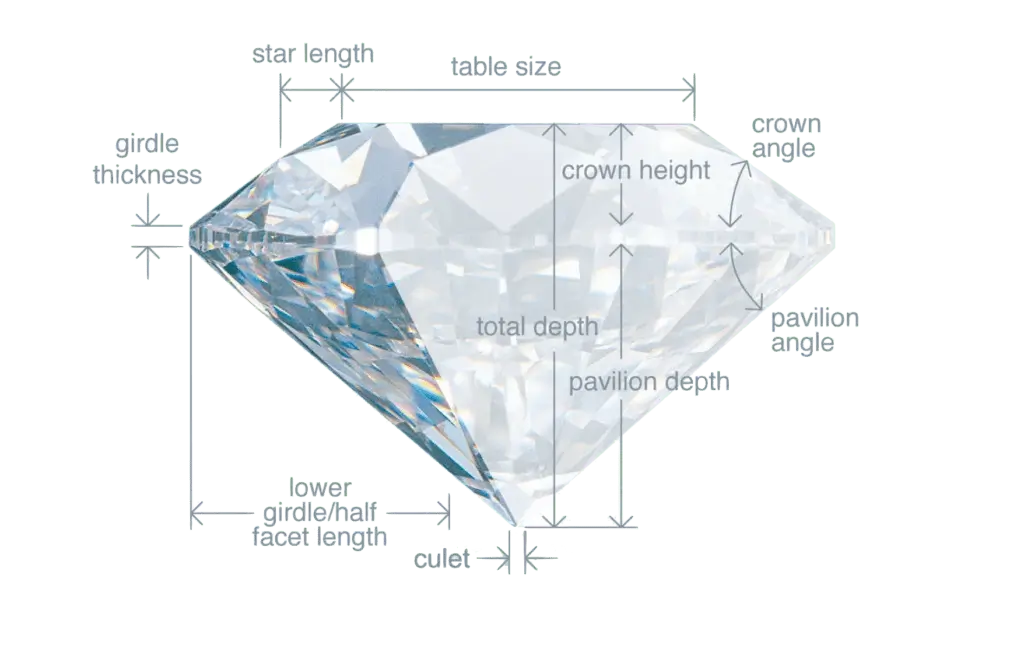
A diamond is a natural precious gemstone that forms from carbon. After the proper pressure and time is applied by nature, the carbon transforms in structure. The result is a beautiful, clear and generally colourless crystal.
The most valuable diamonds embody this description as closely as possible. They are transparent, brilliant, clear(for the most part, more on this later), and as big as you can get. While it’s certainly true that a small diamond can be beautiful, larger gems make a big statement.
Principal Parts of a Diamond
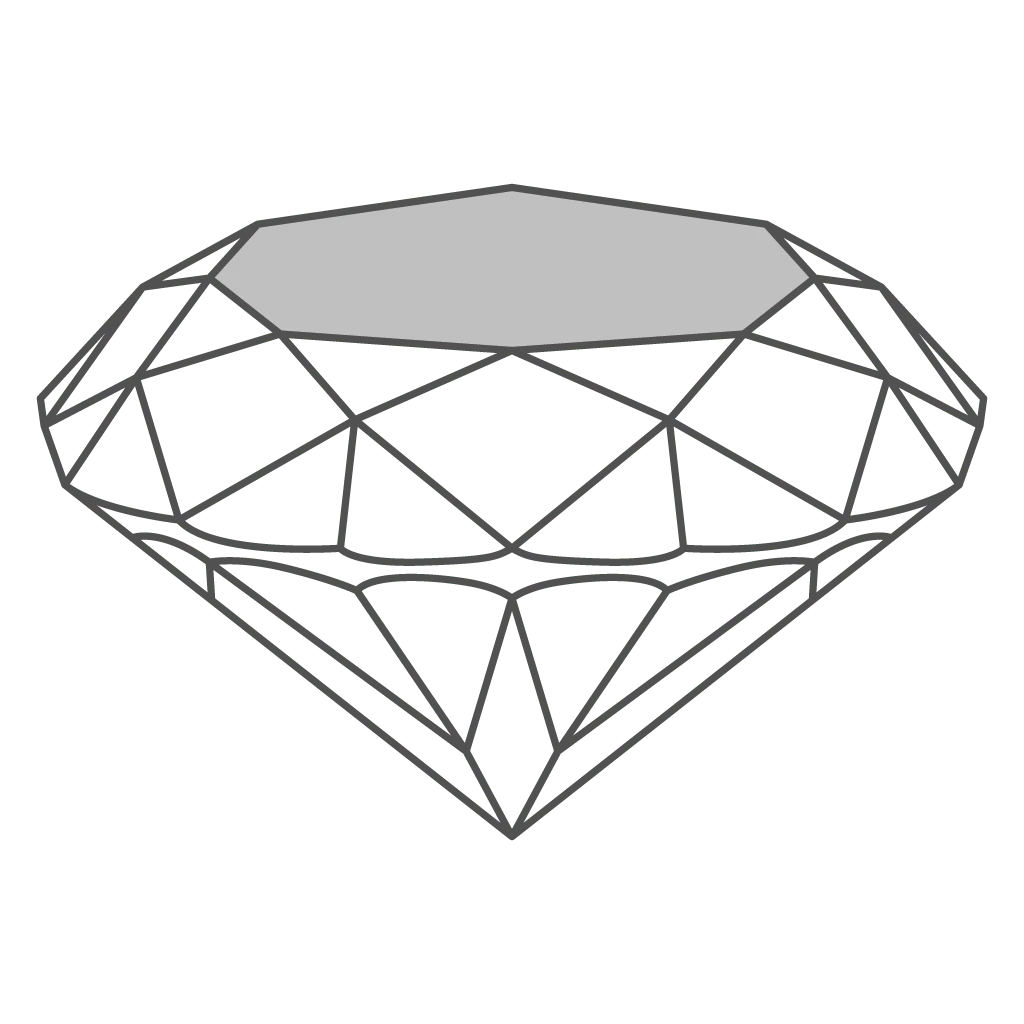
Table
- The upper most flat surface on the superior portion of the diamond.
- It runs parallel to the plane of the girdle.
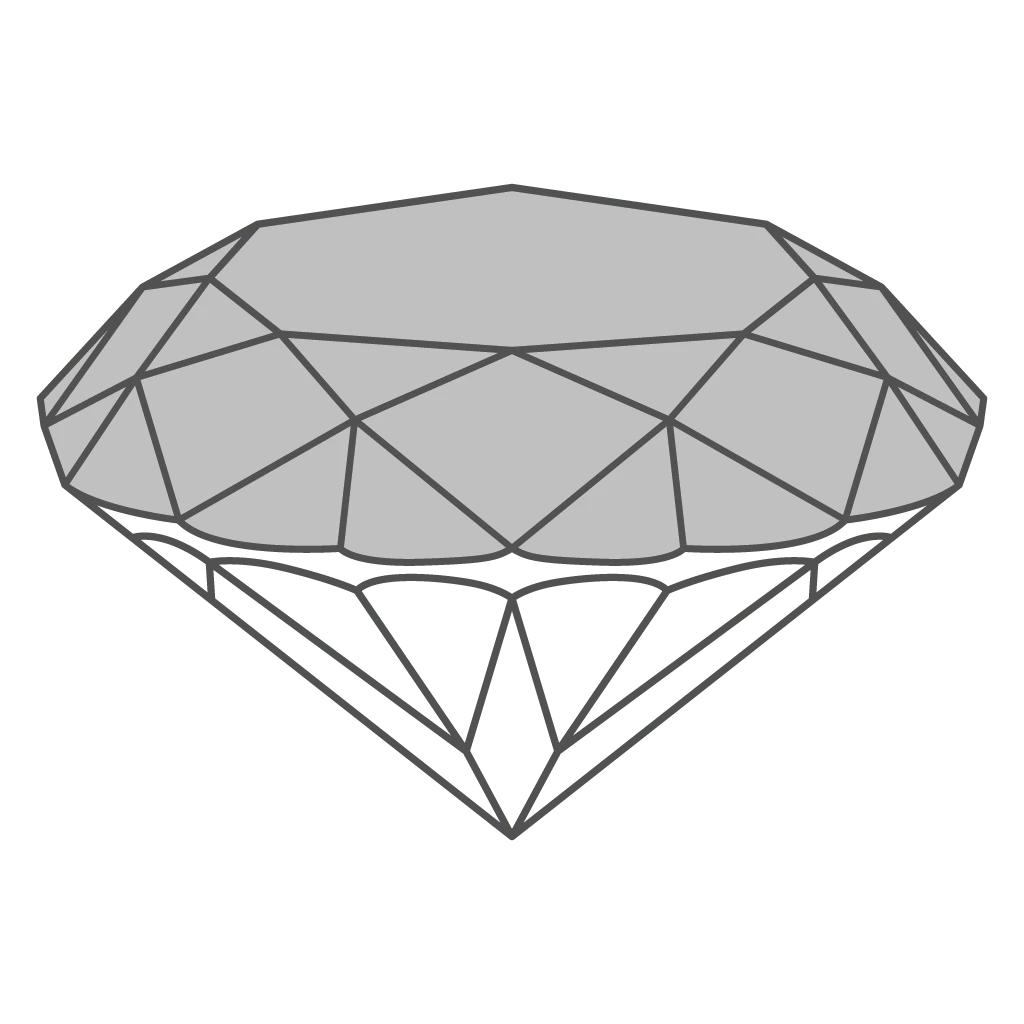
Crown
- The whole portion above the girdle line on a diamond.
- The facets above the girdle and table are all part of the diamond crown.
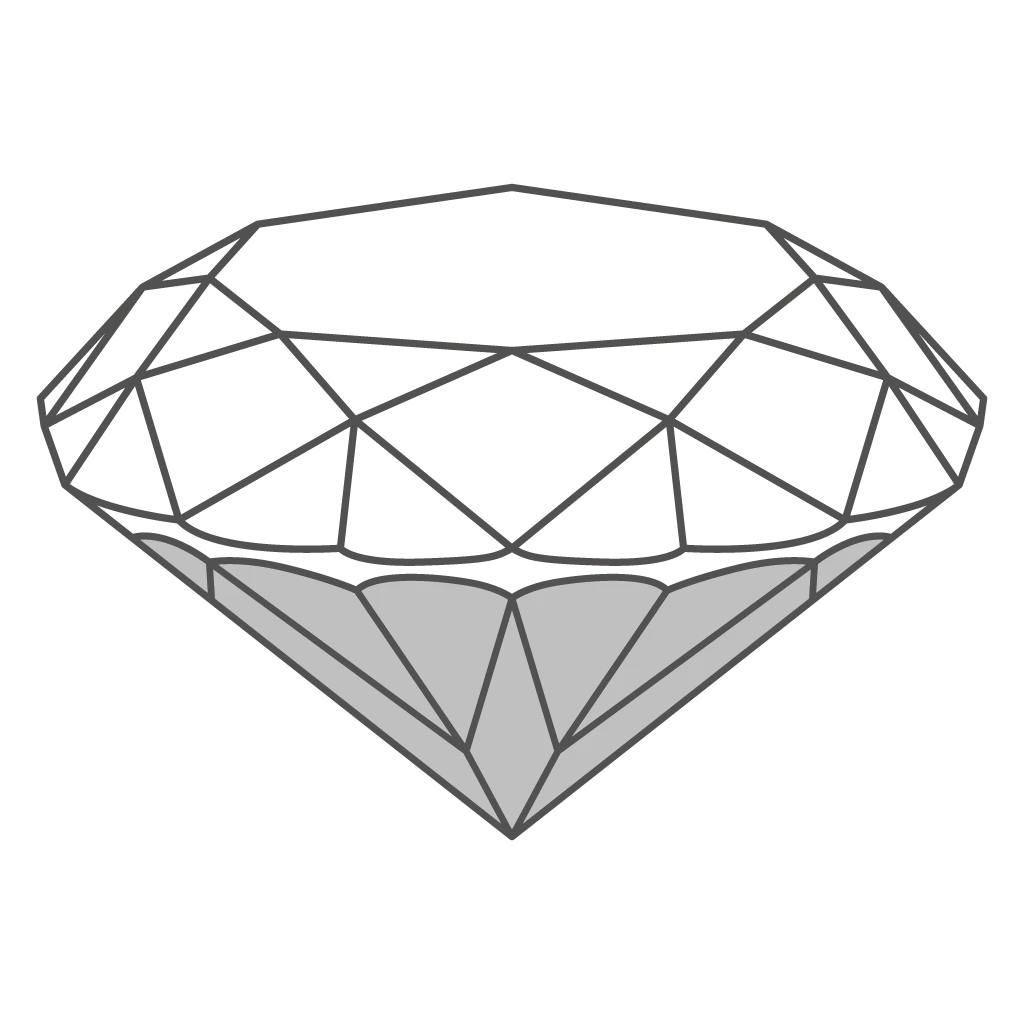
Pavilion
- The portion of the diamond beneath the girdle.
- This element impacts how the diamond will interact with light.
- Well cut pavilion will allow the maximum amount of light to reflect from the surface of the diamond.
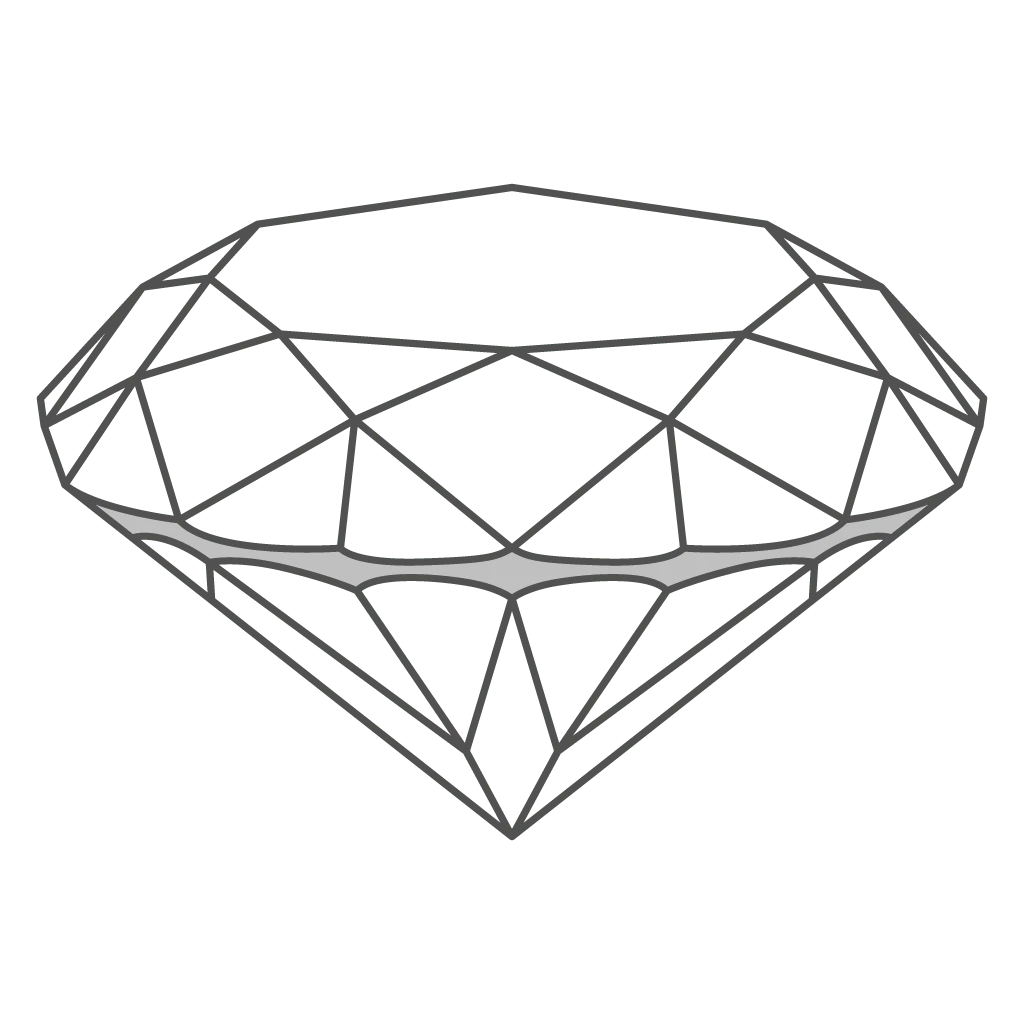
Girdle
- The widest part of the diamond where the crown meets the pavilion.
- This area may have facets or may be smooth.
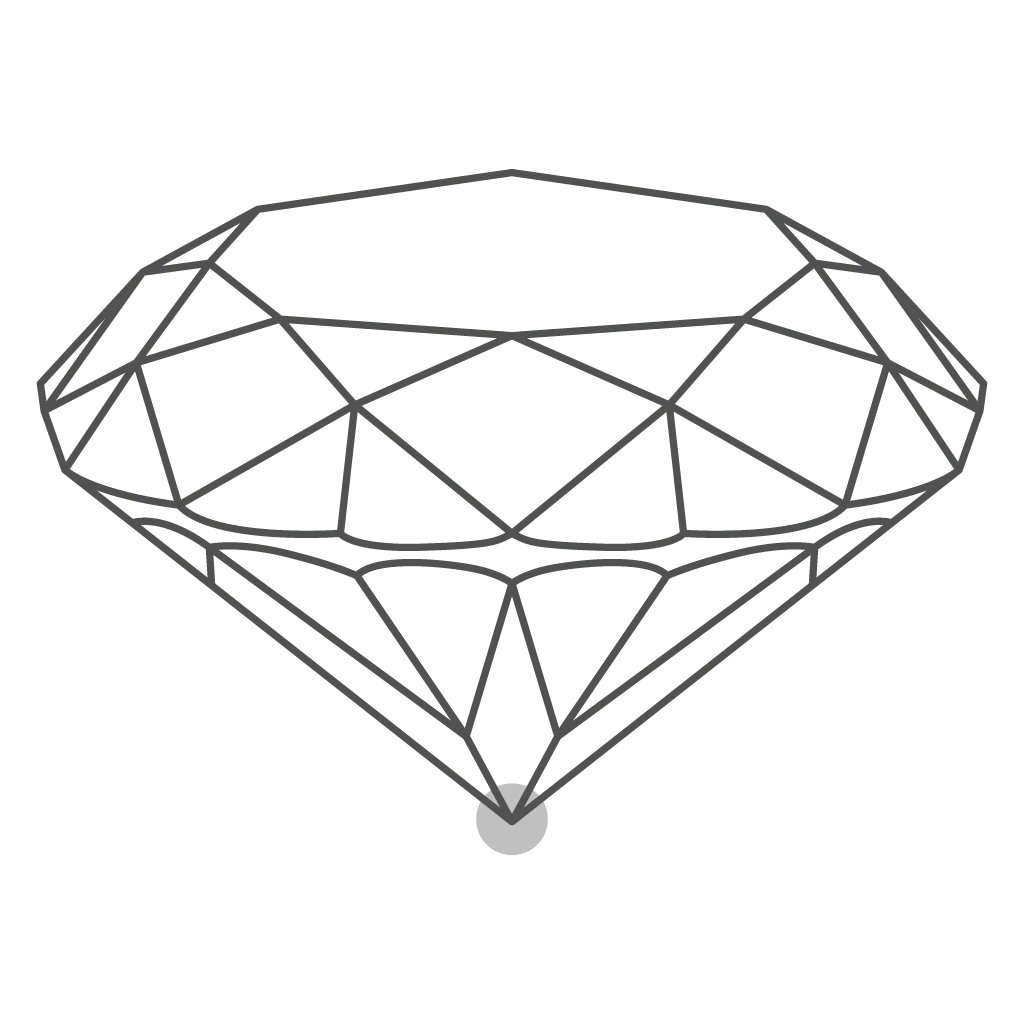
Culet
- The culet is the small area at the bottom of a diamond’s pavilion.
- It can be a point or a very small facet sitting parallel to the table.
About Diamond Depth
When viewed from the side, a diamond’s depth is the distance from culet to the top of the table. Basically depth % refers to the height of a diamond. Depth is measured in millimetres and percentage. The depth % of a diamond can be achieved by dividing the depth by the width. The ratios and sizes of a diamond’s depth is one of the main factors impacting diamond cut quality.
